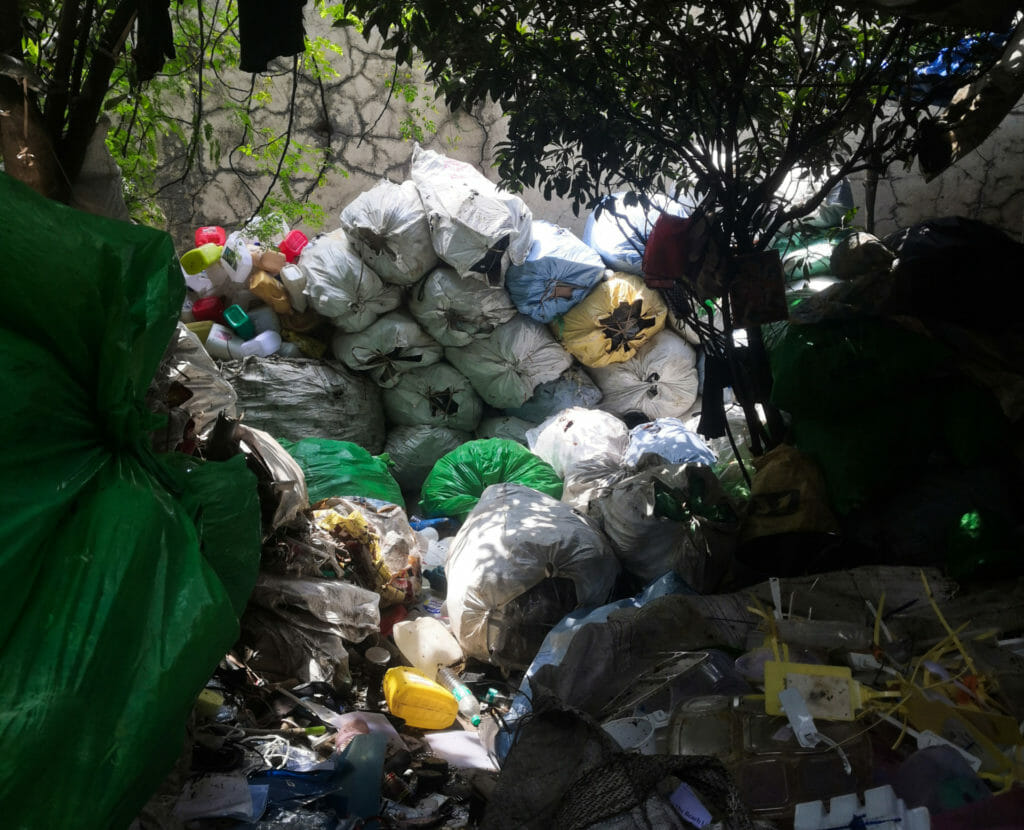An often overlooked link in the entire waste segregation and management chain is the dry waste segregation centre (DWSC). Mumbai has 46 of them — of varying sizes and capacities — spread across the 24 wards of the city. They serve as the heart of decentralised waste management; collecting waste from houses across the city, clubbing and sorting them and finally, sending it for recycling.
In Mumbai, the centres work in partnership with the Brihanmumbai Municipal Corporation (BMC) and organisations involved in waste management. The BMC provides the space and vehicles for the centre. An NGO then takes over, overseeing the dry waste collection, employing waste pickers and sorters, and sending the collated dry waste to respective recyclers.
This particular DWSC, on Ajit Glass road in Jogeshwari, is run by the NGO Aakar Mumbai.
The journey of dry waste


While wet waste is the prerogative of the municipality, dry waste collection — provided it is segregated and stored separately — is the responsibility of the NGO. The frequency of collection differs, depending upon the quantity of waste the housing society generates and vehicles with the dry waste segregation centre. This DWSC has access to two tempos, one given by the BMC, and the other by Aakar.
When it arrives, the waste is a mix of paper, plastic, metal and hazardous waste. Before it can be sent for recycling, it will go through several stages of segregation. To see this in action, look no further than the DWSC.



A crucial aspect of the DWSCs is incorporating waste pickers into the formal waste management ecosystem.
Madhavram chooses to work on a contract basis; for every kilogram of material he segregates, he is paid Rs 2. The lighter materials, like tissue paper, fetch a slightly higher price of Rs 2.5. The numbers add up, and with some overtime, he can earn Rs 20,000 to Rs 25,000 in a month.
It’s been seven years since Madhavram started working at the DWSC, finding the gig through word-of-mouth. Earlier, as an employee, he was paid only Rs 12,000 a month.

Read more: Much of the segregated dry waste in Mumbai ends up in landfills; here’s why


The plastic bottles pictured are higher quality Indian-brand alcohol bottles, fetching Rs 5 more than a run-off–the-mill drinking water bottle. But they require laborious detaching of metal caps and rings. The labels are exempt; they are made of paper, which will disintegrate during the washing stage of recycling.

The DWSC also buys waste from waste pickers, offering them a rupee higher than the market rate for a kilogram of each product.
The women are on the hunt in the neighbouring areas from 9 am to 2 pm, searching for recycling material littered or in public bins. They manage to earn Rs 1,800 to Rs 2,500 on weeks when the catch is good. But when it is not, as on rainy days, they barely make Rs 1,600.



The DWSC buys the remaining quantity needed to pack a full truck from private scrap vendors in the city. After all, most recycling centres are far away — on the outskirts of Mumbai in Dahanu, or outside the state in Surat or Kanpur.

This DWSC at Ajit Glass Road is well over 2,000 square feet. Rashid estimates the centre receives around 10 tons of dry waste every day for segregation.
“Our aim is to stop plastic from being burnt or sent to the dumping ground. That is beneficial for the environment,” he says.
Not all wards have it this good. Ward E only has one DWSC, at 250 square feet. Ward N and S also have to make do with one DWSC, sized at around 540 square feet. In the absence of adequate collection and segregation, most dry waste is destined for the landfill.